Strawberry Hill House’s story begins in 1747, when Horace Walpole discovered and purchased ‘Chopp’d Straw Hall’, one of the last remaining sites available on the banks of the Thames in fashionable Twickenham. He set about transforming what was then a couple of cottages into his vision of a ‘little Gothic castle’ with pinnacles, battlements and a round tower. Thus Strawberry Hill House was born – the House became a tourist attraction in Walpole’s lifetime and beyond.
Built as Walpole’s summer residence, the castle (or villa) soon became of interest to local inhabitants. Walpole allowed four visitors a day – with tours conducted by his house-keeper – and published rules for their guidance (no children allowed). Walpole also delighted in entertaining foreign ambassadors, royalty and English aristocracy, several of whom were near neighbours: ‘Dowagers like flounders inhabit all around,’ he wrote.
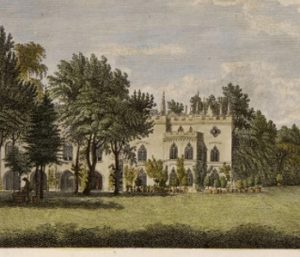
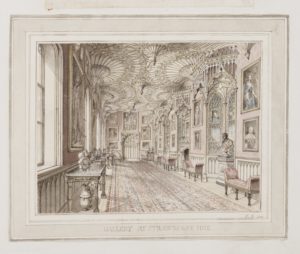
The popularity of Strawberry Hill House was a key contributing factor in the emergence of Gothic Revival architecture that grew throughout the 18th and 19th Centuries, taking its inspiration from gothic cathedrals around Europe. Largely designed by Walpole’s friends, otherwise known as the ‘Committee of Taste’, which comprised John Chute and Richard Bentley, chimney pieces, doors and ceilings were based on gothic vaulting, medieval tombs and rose windows: ‘all Gothicism, gold and looking glass’ as the poet Thomas Gray described it.
Following Walpole’s death in 1797 the House passed to his cousin’s daughter and renowned sculptor Anne Seymour Damer. In 1811, the House passed to Walpole’s great niece, Elizabeth Waldegrave, and then to her grandson, John Waldegrave. John died prematurely, passing the house to his brother, George, the Seventh Earl of Waldegrave. It was now that the House nearly met its demise. Having been imprisoned for ‘riotous behaviour’, George took against Twickenham and vowed to let the House fall into ruin. He arranged the ‘Great Sale’ in 1842, where most of Walpole’s collection was sold over the course of a week.
Born in 1717, Horace Walpole was a pivotal figure in 18th Century society, literature, art and architecture. The third son of Sir Robert Walpole, Britain’s first Prime Minister, Horace was author of ‘The Castle of Otranto’, the world’s first Gothic novel, and founder of Strawberry Hill House and its vast collection of treasures.
Educated at Eton College and King’s College, Cambridge, Horace Walpole was a man of many talents with a large network of influential friends. Following his departure from education, Walpole’s father secured him three sinecure positions that afforded him income to support himself and his more creative and social endeavours.
From 1739-41, Walpole embarked on a Grand Tour and European influences can be seen in Strawberry Hill House’s design.
Over his lifetime Walpole was an avid writer, leaving many works including some 7,000 letters and an account of his collection in ‘A Description of the Villa of Horace Walpole’. Inspired by a nightmare he experienced at Strawberry Hill House, Walpole’s seminal work, ‘The Castle of Otranto’, was printed on his private printing press in the grounds, the first in the country.
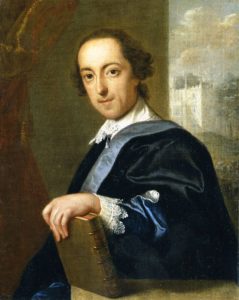
Strawberry Hill House’s restoration is at the heart of everything we do. Funded with the support of the Heritage Lottery Fund and other supporters, the £10 million repair and restoration of Walpole’s villa has made opening the House to the public possible.
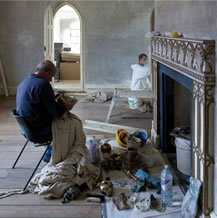
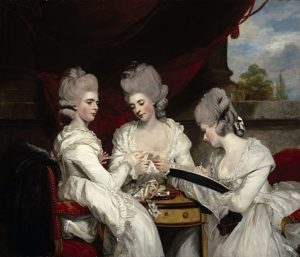
Lost Treasures of Strawberry Hill: Masterpieces from Horace Walpole’s collection
In association with the Lewis Walpole Library, Yale University
Sponsored by J.Stern & Co.
The Lost Treasures of Strawberry Hill, ran from the 20 October 2018 – 24 February 2019. Over 150 objects from Horace Walpole’s famous and unique collection were reunited in the house for this once-in-a-lifetime exhibition.
Horace Walpole’s collection was one of the most important of the 18th century. It was dispersed in a great sale in 1842 and for the first time in over 170 years, Strawberry Hill House was seen as Walpole had conceived it, with the collection in the interiors as he designed it, shown in their original positions.
Famous for marrying four times and saving the Strawberry Hill House from ruin- adding grand entertaining spaces now know as the Waldegrave Wing. Lady Waldegrave was as empowered as she was eccentric – a worthy successor to Horace Walpole’s legacy.
Following the purchase of Strawberry Hill House by St Mary’s Catholic College in 1923, the House became the home and teaching quarters of the Vincentian Fathers in 1925.
In 1883 Strawberry Hill was purchased by Herman, Baron de Stern (a member of the European merchant banking family, a Portuguese baron and the 13th richest man in Britain).